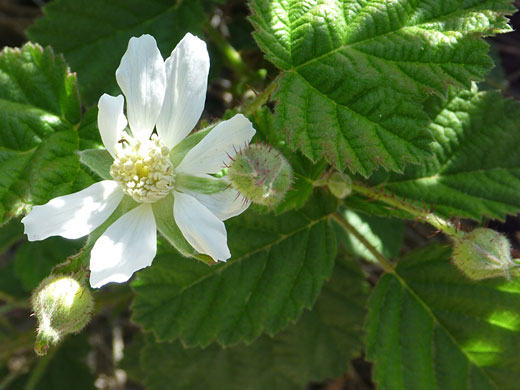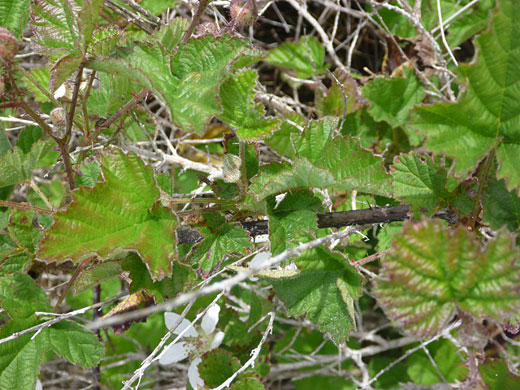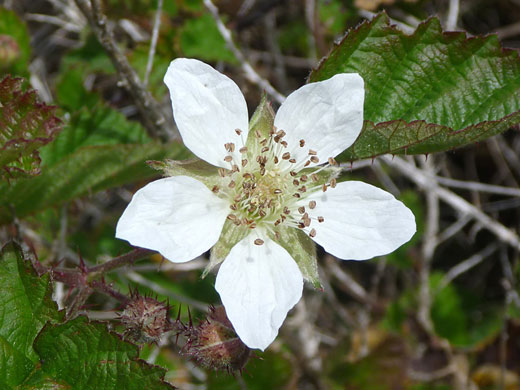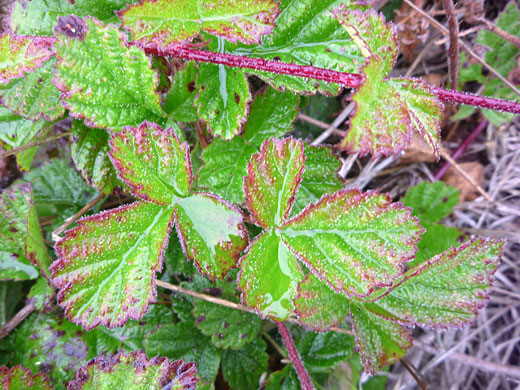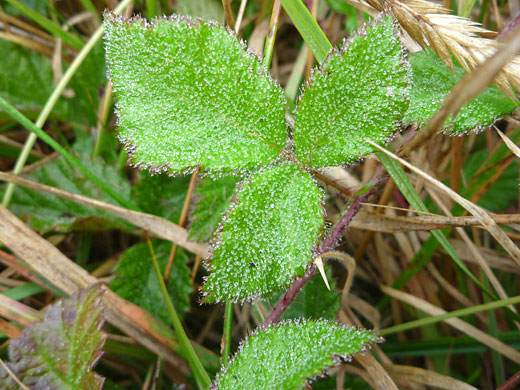
White flower - rubus ursinus (California blackberry), along the trail to Gaviota Peak in Gaviota State Park
Common names:
California blackberry, California dewberry, Douglas berry
Family:
Scientific name:
Rubus ursinus
Main flower color:
Range:
California, Oregon and Washington
Height:
Several feet
Habitat:
Varied; scrubland, woodland, streambanks
Leaves:
Divided into 3 or more ovate lobes (usually), with irregularly toothed edges, up to 4 inches long. Green on top, lighter green underneath
Season:
March to August
Stems, buds and the undersides of the leaves of rubus ursinus bear thin, red sharp (though easily detached) spines at regular intervals. Leaf edges are tinged red, as are the stems, which become tough and woody with age; the plant is a vine-like shrub, spreading to many feet. Flowers are dioecious, containing either male or female components, but both have five pointed green sepals and five longer, rounded white petals displaced by 36°. Male flowers are centered on a group of several dozen white stamens topped by white (later brown) anthers. Female flowers have a smaller number of white pistils. The edible fruits are around half an inch in length, colored dark purple.
All Contents © Copyright The American Southwest | Comments and Questions | Contribute | Site Map

